
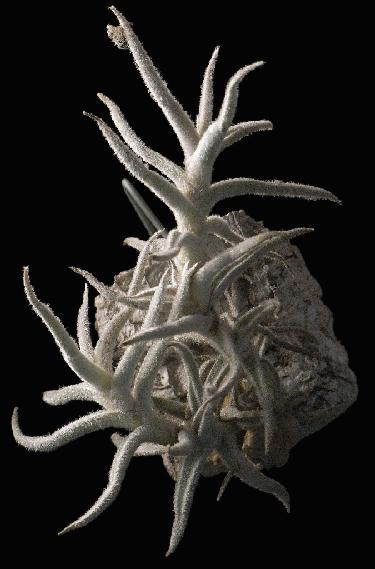

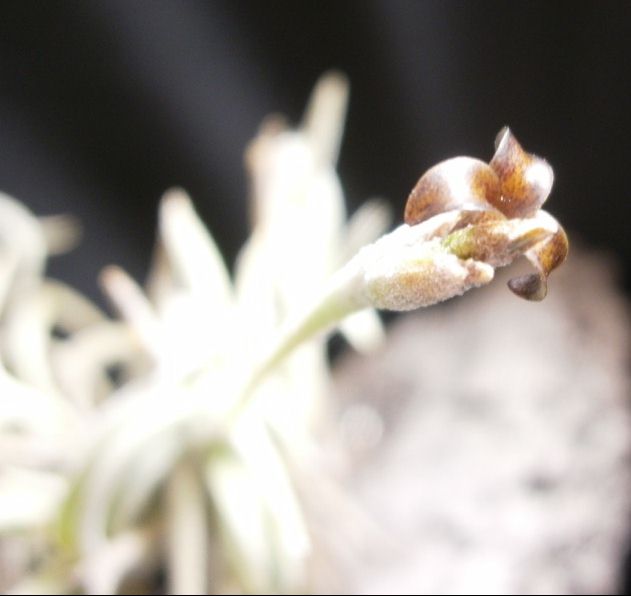
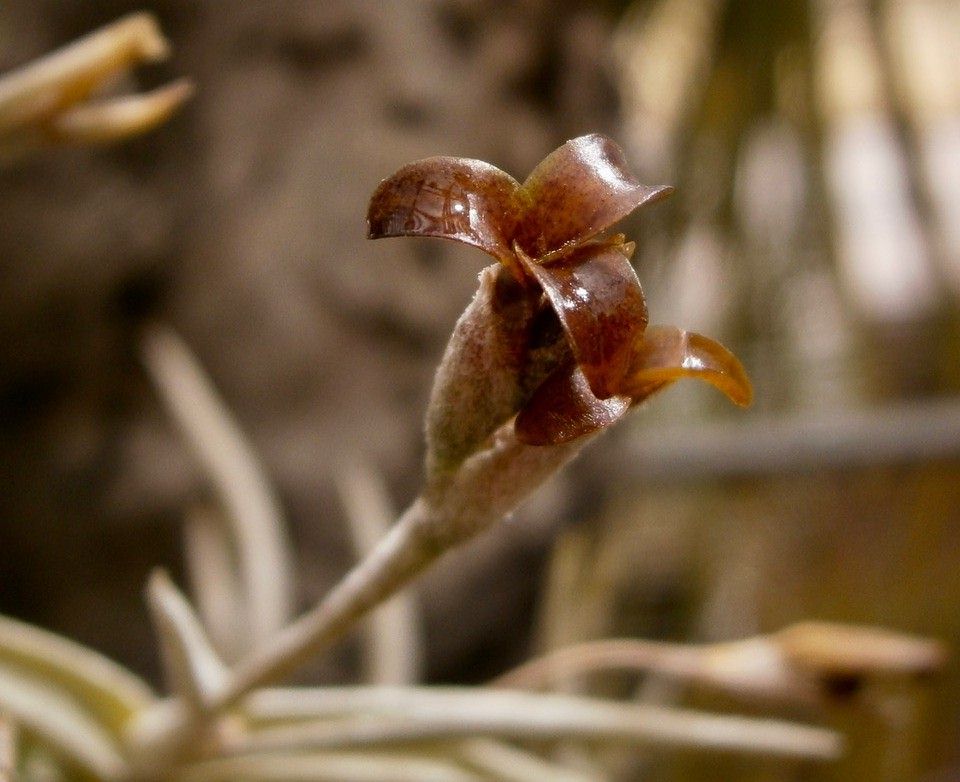

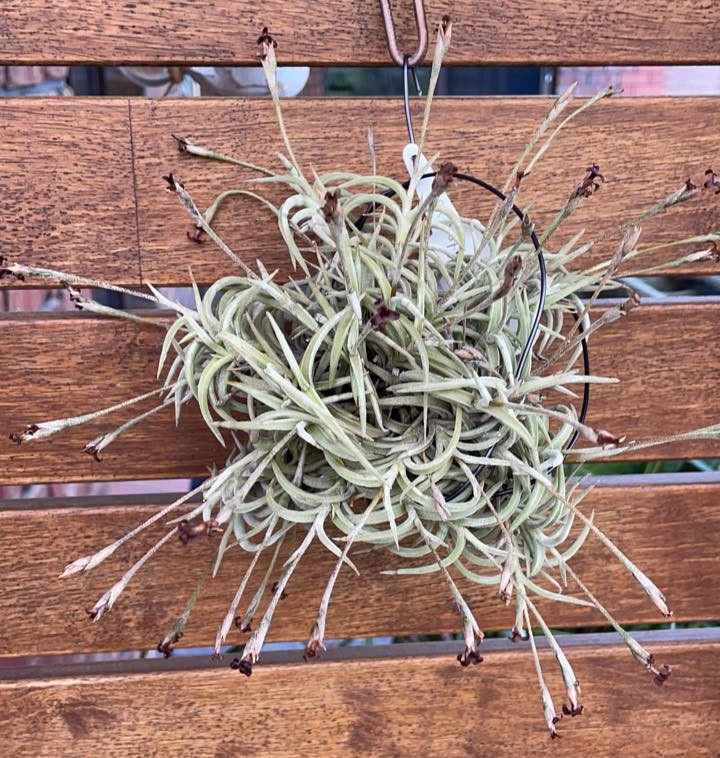
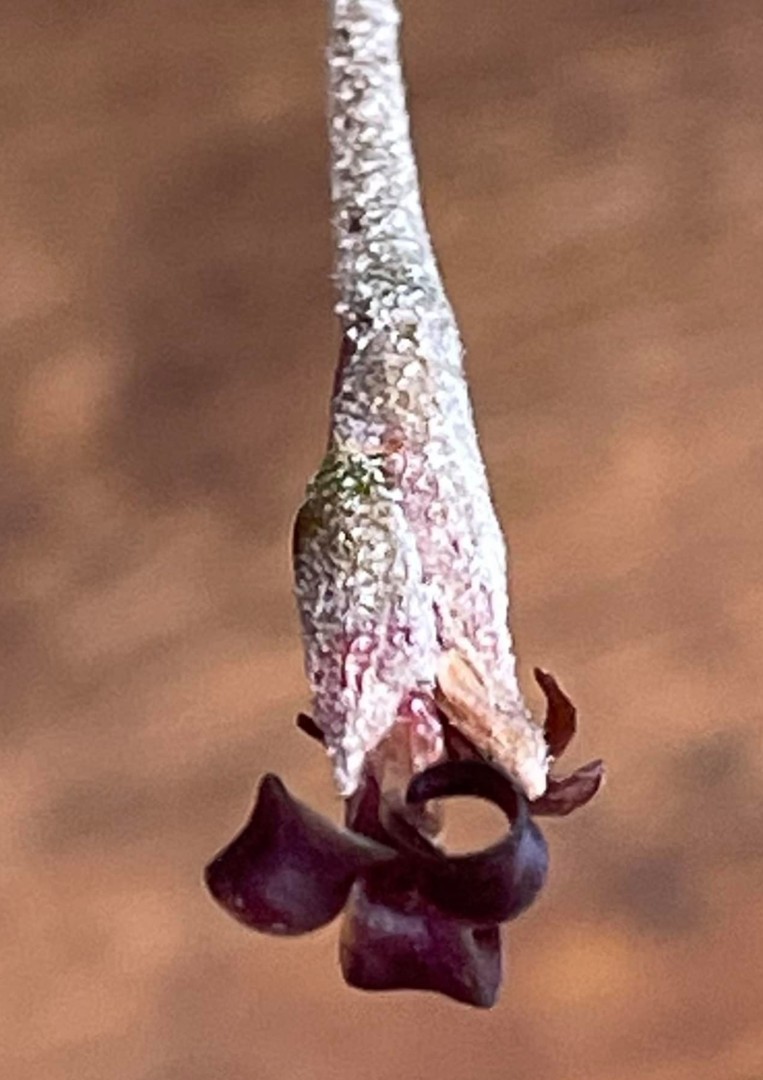
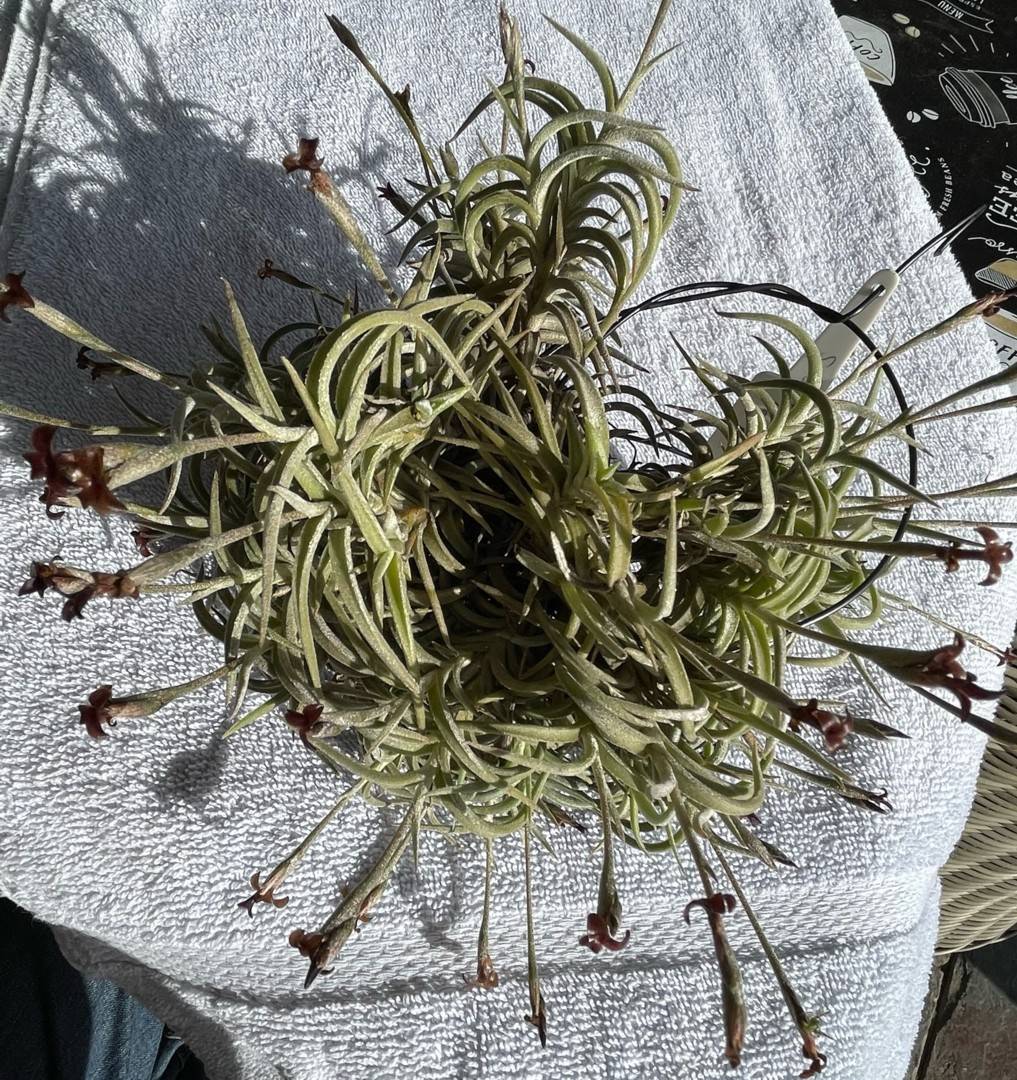
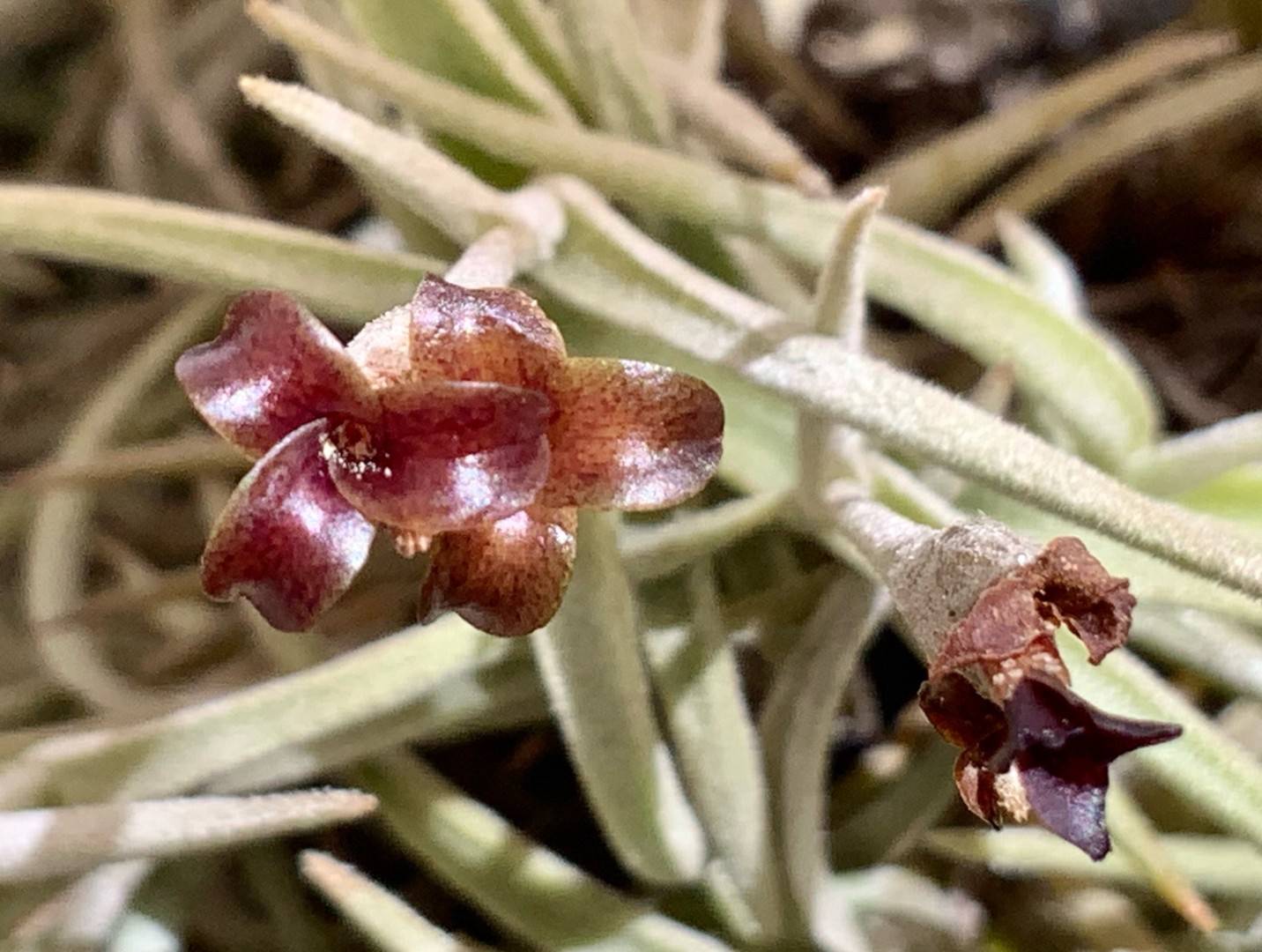
Plant- epiphytic, flowering to 14 cm long, caulescent, branched, leaves densely distichous, diverging all the way to recurved, densely tomentose.
Leaf sheath - up to 10 mm long, 8 mm wide, becoming green up to transparent, nerved, edges not nerved, glabrous, polished, clasping the stem.
Leaf blade - up to 40 mm long, tubular, 2-3 mm diameter, subulate-acuminate, soft, dense tomentose.
Scape - 20-30 mm long, 1 mm diameter, dense lepidote.
Inflorescence - simple, distichous, dense 2-3 flowered, 20 mm long.
Floral bract - (8.2-) 11.8 (-13.4) mm long, 5.4 to 6.8 mm wide, 11 to 12 nerved, lepidote, ovate, very short blade, as long as or shorter than the sepals.
Rachis - lepidote.
Flower - subsessile, scented.
Sepals - 8.2 to 10.2 mm long, 2.4 to 2.6 mm wide, sub-glabrous, green, 5 to 7 nerved, posterior pair slightly keeled and joined for 53-64%, joined 8-9 % at the front, lance-like.
Petals - 14.2 to 15.4 mm long, 2.7 to 3.1 mm wide, tongue like blade, moderately broadened, recurved or rolled inwards, tip rounded, brown violet up to black violet, rarely ochre colored.
Stamens and Style - included, filaments pale, one nerved, 4.4 to 5.1 mm long, anthers inserted at base, anthers golden, 1.9 to 2.3 mm long, 0.3 mm diameter.
Gynoecium - green, 3.9 to 4.6 mm long, 1.2 to 1.6 mm diameter.
Ovary - oval-cylindrical, 2 to 2.3 mm long. Style and ovary same length, thin, capsule to 2 mm diameter to 20 mm long, cylindrical, obtuse.
Habitat - epiphytic on Oreocereus neocelsianus in association with T. caliginosa.
Holotype Bolivia, Dept. Potosi, mountains near Cotagaita 3000 m. s. m. 20. 7. 1979, leg. H & l Hromradnik, HR 5093 (WU) Isotype in herb. W. Till
Plants living in the collection of Hromadnik (Sub HR 5093) and in collection of W Tiill (Sub WT 42)
Differs from T. caliginosa by
(1) stem clearly seen;
(2) more slender in habit; and
(3) posterior sepals are joined for a long way.
The new species undoubtedly has some relationship with T. caliginosa. It grows in the area near Cotagaita and seems to be endemic there. Its characteristics point to a strong derivative group: it is stemmed and branched, the leaves are short, the whole plant is small, and above all the posterior sepals are high connate in contrast to the anterior. Because of the use of connateness in floral detail is accepted as a diagnostic characteristic in the differentiation of species, the value of this characteristic within species limits is high.
T. cotagaitensis grows with T. caliginosa on Oreocereus, transitional forms could, however, not be found.